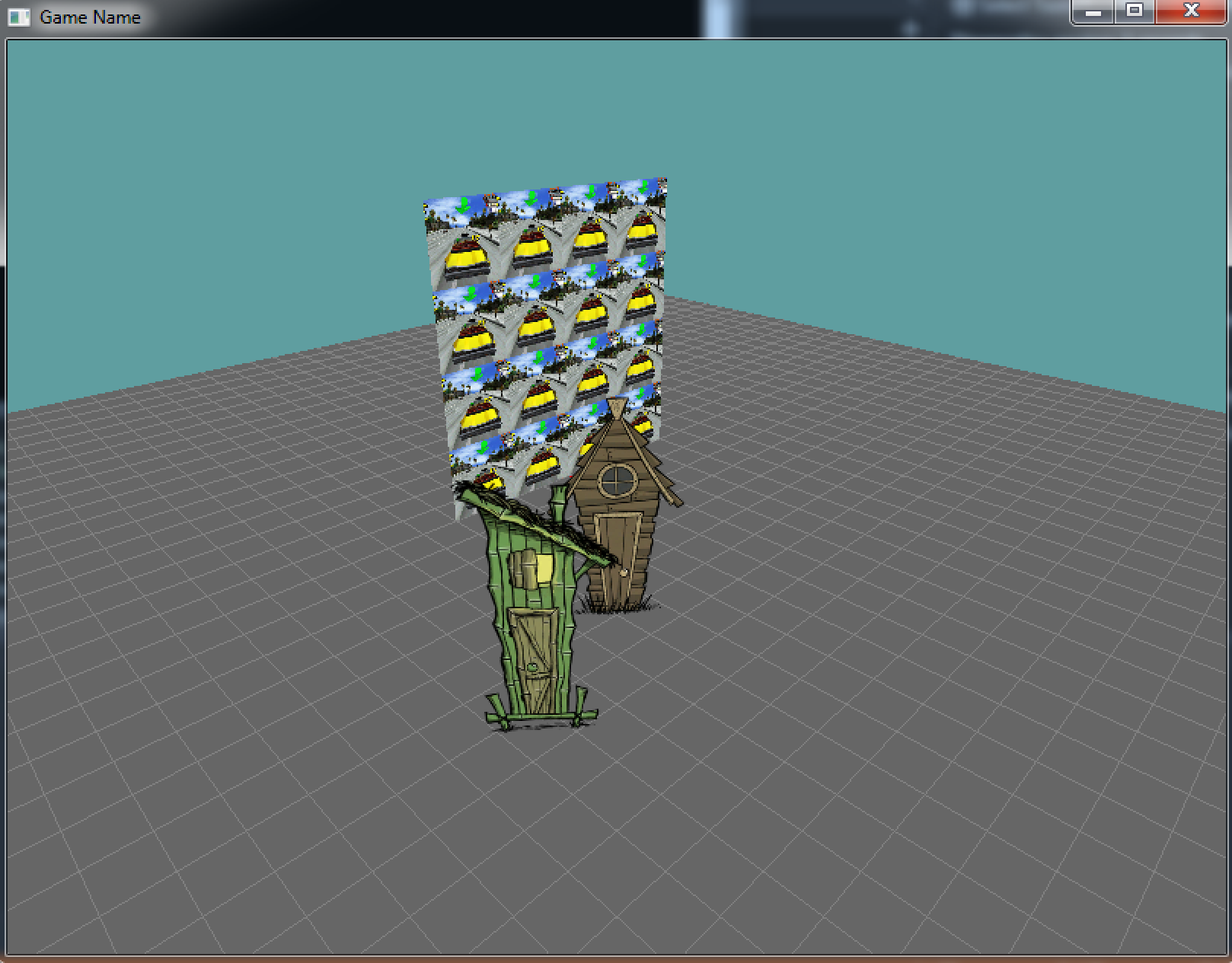Texture Paramaters
You can tell OpenGL how to treat different properties of textures using the GL.TexParameter function. We've already used the function when telling OpenGL how to handle the min and mag filters for the textures being loaded. What other texture paramaters can we control?
Texture Wrapping
There are a few paramaters we can control using GL.TexParameter, but the only ones we care about are mip-mapping and texture wrapping. So what is texture wrapping?
We've seen what happens when you have a quad which is mapped within the 0 to 1 uv range, like so:
GL.Begin(PrimitiveType.Quads);
GL.TexCoord2(0, 1); // What part of the texture to draw
GL.Vertex3(left, bottom, 0.0f); // Where on screen to draw it
GL.TexCoord2(1, 1); // What part of the texture to draw
GL.Vertex3(right, bottom, 0.0f);// Where on screen to draw it
GL.TexCoord2(1, 0); // What part of the texture to draw
GL.Vertex3(right, top, 0.0f); // Where on screen to draw it
GL.TexCoord2(0, 0); // What part of the texture to draw
GL.Vertex3(left, top, 0.0f); // Where on screen to draw it
GL.End();
But what happens if you exceed that range? For instance, what if your texture coords dont go to one, but they go to 2... Or -7. Like this:
GL.Begin(PrimitiveType.Quads);
GL.TexCoord2(0, 3); // What part of the texture to draw
GL.Vertex3(left, bottom, 0.0f); // Where on screen to draw it
GL.TexCoord2(3, 3); // What part of the texture to draw
GL.Vertex3(right, bottom, 0.0f);// Where on screen to draw it
GL.TexCoord2(3, 0); // What part of the texture to draw
GL.Vertex3(right, top, 0.0f); // Where on screen to draw it
GL.TexCoord2(0, 0); // What part of the texture to draw
GL.Vertex3(left, top, 0.0f); // Where on screen to draw it
GL.End();
This is where texture wrapping comes into play. The texture wrapping paramater tells OpenGL how to handle this exact scenario. There are 4 possible values you could set wrapping to:
- Repeat Will tile the texture
- MirroredRepeat Will tile the texture, with each tile being flipped
- ClampToEdge Will use the edge pixel of a texture to determine the remaining colors
- ClampToBorder Will use a solid border color to fill the remaining pixels
This might sound a bit confusing at first, so lets take a look at how each option acts in a real world situation

You can set different paramaters for the X and Y axis. You specify each axis as TextureParameterName.TextureWrapS for the X and TextureParameterName.TextureWrapT for the Y. For example, if you wanted to set a texture to repeat on both axis, you would use this code:
GL.TexParameter(TextureTarget.Texture2D, TextureParameterName.TextureWrapS, (int)TextureWrapMode.Repeat);
GL.TexParameter(TextureTarget.Texture2D, TextureParameterName.TextureWrapT, (int)TextureWrapMode.Repeat);
There is one more paramater you have to set if you use the ClampToBorder paramater, and that's the border color. You can set the border color like this:
GL.TexParameter(TextureTarget.Texture2D, TextureParameterName.TextureBorderColor, new float[] { r, g, b, a});
On your own
Modify the sample scene we've been working with so that the crazy taxi image is uv'd from -2 to 2 instead of 0 to 1. Make sure the wrapping paramaters on both axis are set to repeat. The final image should look like this:
